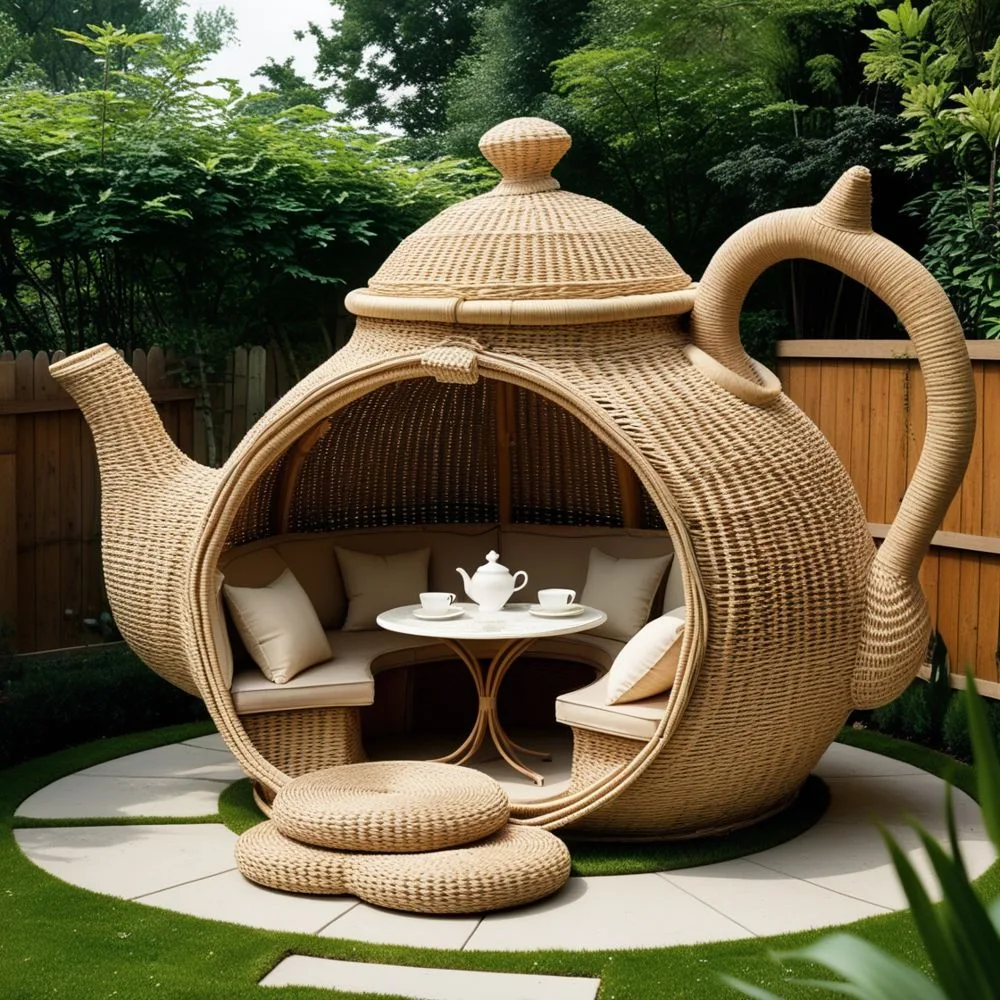In the world of garden design, finding ways to express personality while creating functional spaces can be challenging. Enter the tea pot-shaped outdoor seating area – a delightful fusion of practicality and whimsy that’s capturing the imagination of homeowners and landscape designers alike. This unique design concept transforms the ordinary patio into a conversation piece that invites both relaxation and wonder.
The charm of a tea pot-shaped outdoor seating area lies in its ability to evoke childhood memories of tea parties while providing a sophisticated space for adult gatherings. Whether you’re a tea enthusiast, an Alice in Wonderland fan, or simply someone who appreciates unexpected design elements, this creative seating arrangement offers a refreshing alternative to conventional garden layouts.
In this comprehensive guide, we’ll explore everything you need to know about conceptualizing, planning, and implementing your own tea pot-shaped outdoor seating area. From material selection to finishing touches, we’ll brew up inspiration to help you create a garden feature that’s as functional as it is fantastical.
Understanding the Appeal of Tea Pot-Shaped Outdoor Seating Areas
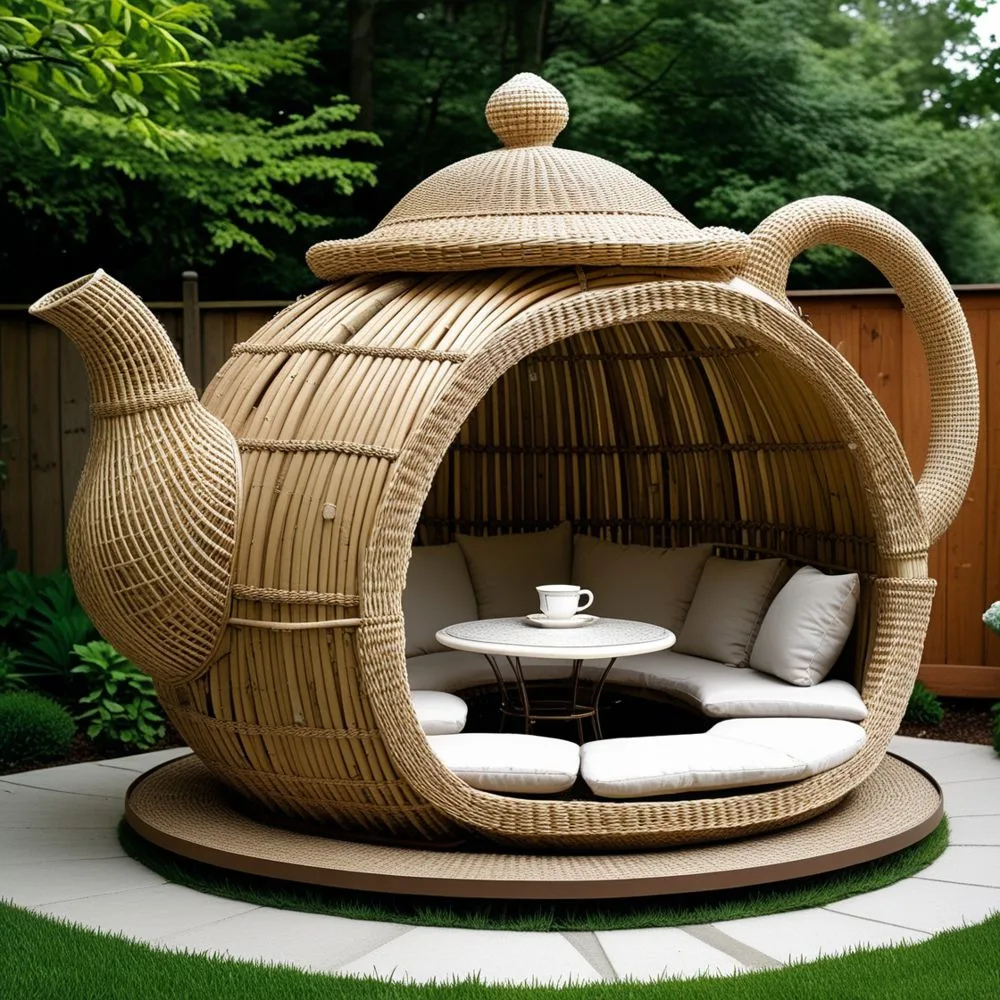
The Rising Popularity of Themed Garden Spaces
In recent years, themed outdoor spaces have gained significant traction among homeowners looking to create memorable environments. A tea pot-shaped outdoor seating area represents a perfect blend of novelty and nostalgia, making it particularly appealing to those who seek to create unique outdoor experiences.
Garden designers note that personalized outdoor spaces tend to see more use than generic ones. When you create a seating area that tells a story or evokes emotion – like the warmth and comfort associated with tea – you’re more likely to spend time enjoying it. This emotional connection transforms your garden from a passive space into an active part of your lifestyle.
Balancing Whimsy with Functionality
While aesthetics are important, the success of a tea pot-shaped outdoor seating area ultimately depends on how well it functions as a gathering space. The curved nature of a teapot design naturally creates a sense of intimacy, with the circular “body” of the pot forming the primary seating area and the “handle” and “spout” providing natural entry points or additional seating options.
This organic shape encourages conversation while providing clear sight lines between all seated guests – a fundamental principle of good seating design that’s often overlooked in favor of linear arrangements. The result is a space that feels both playful and purposeful, striking the perfect balance between form and function.
Planning Your Tea Pot-Shaped Outdoor Seating Area
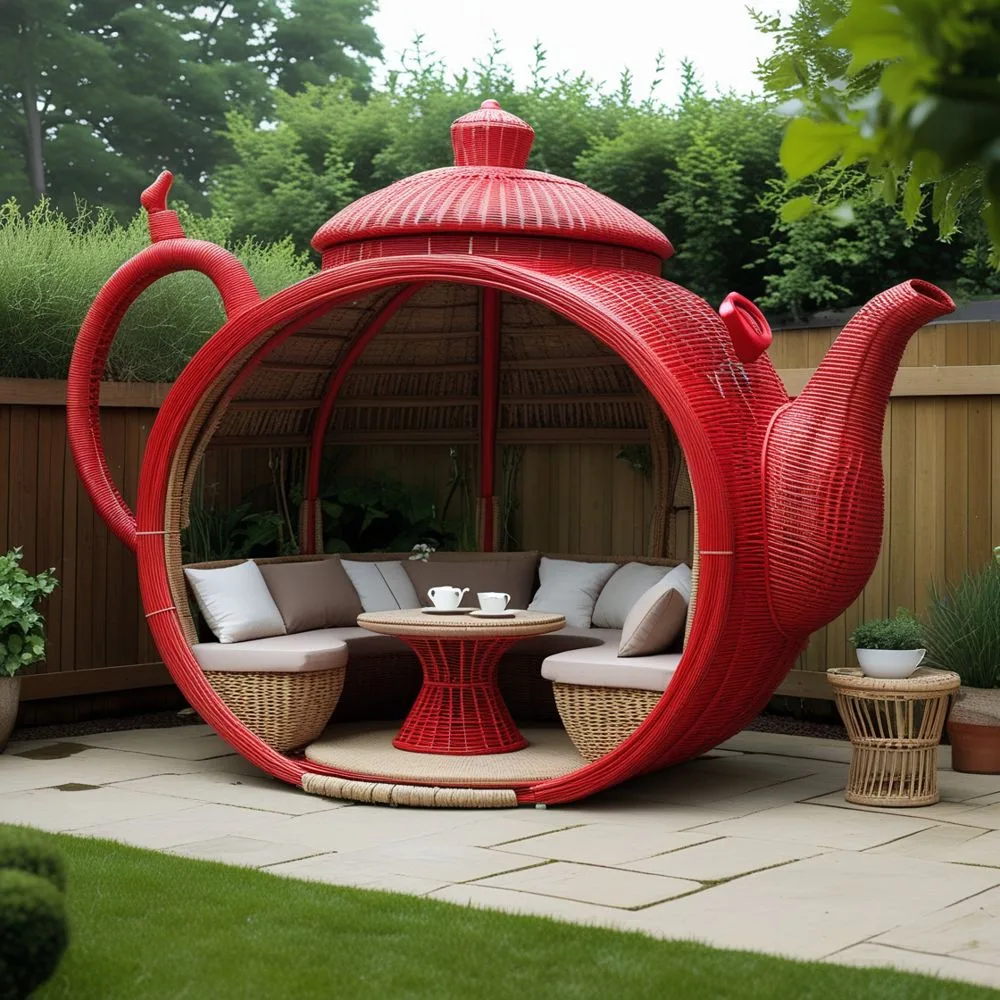
Assessing Your Space and Scale Considerations
Before diving into construction, it’s essential to evaluate your available space. A tea pot-shaped outdoor seating area can be adapted to various garden sizes, but proper scaling is crucial for both visual appeal and usability.
For smaller gardens, consider a compact design that captures the essence of a teapot while maximizing seating capacity. A 10-12 foot diameter for the main circular area can comfortably seat 6-8 people. Larger properties might accommodate an expanded design with a 15-20 foot diameter, potentially including built-in features like a central fire pit or table.
When measuring your space, remember to account for:
- Clearance space around the seating area (minimum 3 feet)
- Access pathways to and from the house
- Existing landscape features you wish to preserve
- Views you want to highlight or obstruct
Selecting the Perfect Location
The placement of your tea pot-shaped outdoor seating area significantly impacts its functionality and visual integration with the rest of your garden. Consider these factors when choosing the ideal location:
- Sun exposure: Morning or afternoon sun preferences based on when you’ll most likely use the space
- Wind patterns: Protection from prevailing winds
- Privacy concerns: Distance from neighboring properties
- Proximity to amenities: Access to outdoor kitchens, storage, or the main house
- Ground conditions: Level areas are preferable, though slight slopes can be accommodated
Many homeowners find that positioning the tea pot-shaped seating area as a focal point visible from inside the house increases enjoyment even when not physically using the space. This visual connection between indoor and outdoor spaces adds value throughout the year.
Design Elements of a Tea Pot-Shaped Outdoor Seating Area
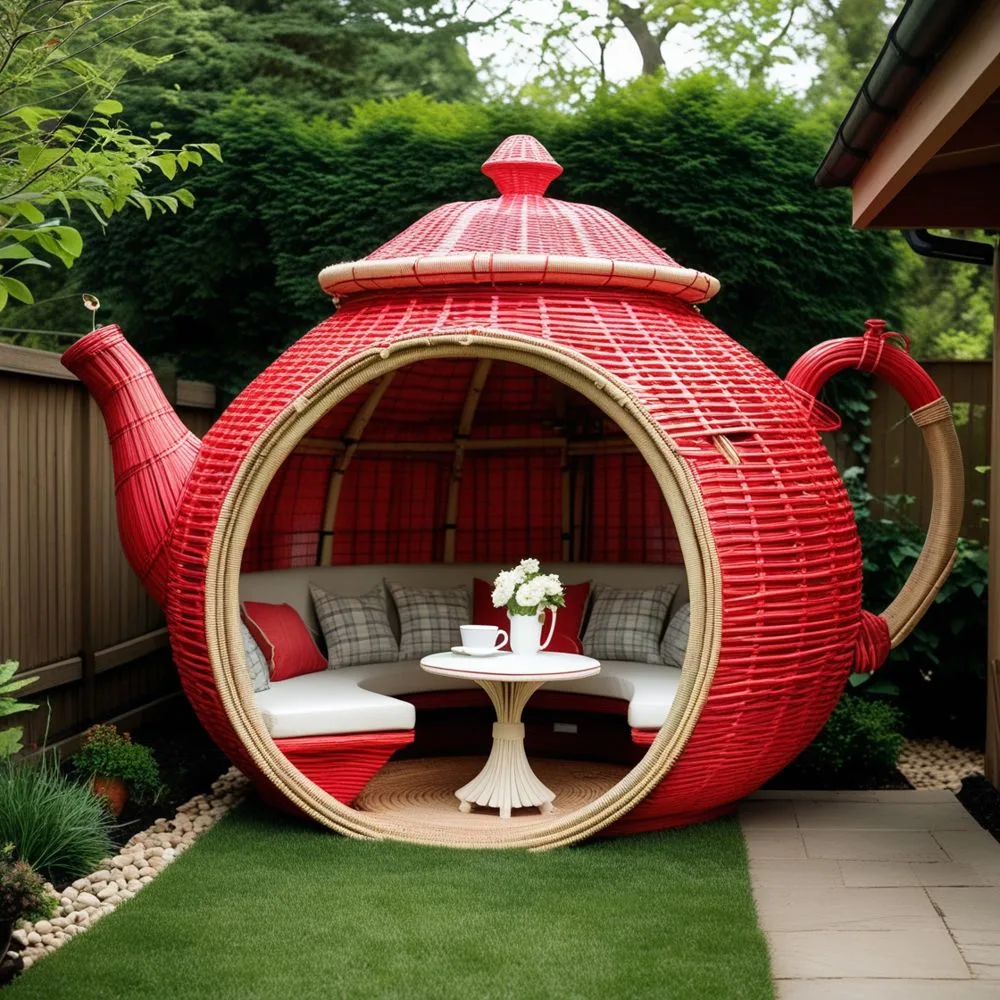
Creating the Basic Structure
The defining characteristic of a tea pot-shaped outdoor seating area is, of course, its distinctive silhouette. While interpretations may vary, most designs include:
- A circular or oval main seating area (the “body” of the teapot)
- A curved extension serving as the “handle”
- A narrower curved extension representing the “spout”
- An optional elevated section suggesting the “lid”
This structure can be realized through various means, depending on your budget and preferred materials:
Hardscaping Options
For permanent installations, consider these hardscaping approaches:
- Paved surfaces: Using brick, stone, or concrete pavers laid in a pattern that defines the teapot shape
- Raised beds: Building low walls that form the teapot outline, with seating installed along the inner perimeter
- Deck construction: Creating a wooden platform cut to the teapot silhouette
- Concrete forming: Pouring a custom concrete pad in the teapot shape
Softer Approaches
For more flexible or budget-friendly options:
- Gravel or decomposed granite: Defining the shape with material contained by flexible edging
- Artificial turf: Creating a green teapot-shaped “carpet” amid natural landscaping
- Mixed materials: Using plantings and mulch to define sections of the design
Seating Arrangements and Furniture Selection
The seating configuration within your tea pot-shaped outdoor seating area deserves careful consideration. The curved nature of the design lends itself to these popular arrangements:
- Continuous bench seating: Following the inner perimeter of the teapot shape
- Conversation pit style: Sunken central area with seating around the edges
- Modular furniture groupings: Separate seating pieces arranged to complement the teapot shape
- Built-in and movable hybrid: Fixed seating along portions with space for additional chairs when needed
When selecting furniture, consider these factors:
- Weather resistance: Materials that withstand your local climate conditions
- Comfort level: Adequate cushioning for extended use
- Stylistic coherence: Designs that complement the whimsical nature of the space
- Flexibility: Options for rearrangement based on different gathering needs
Materials and Construction Considerations
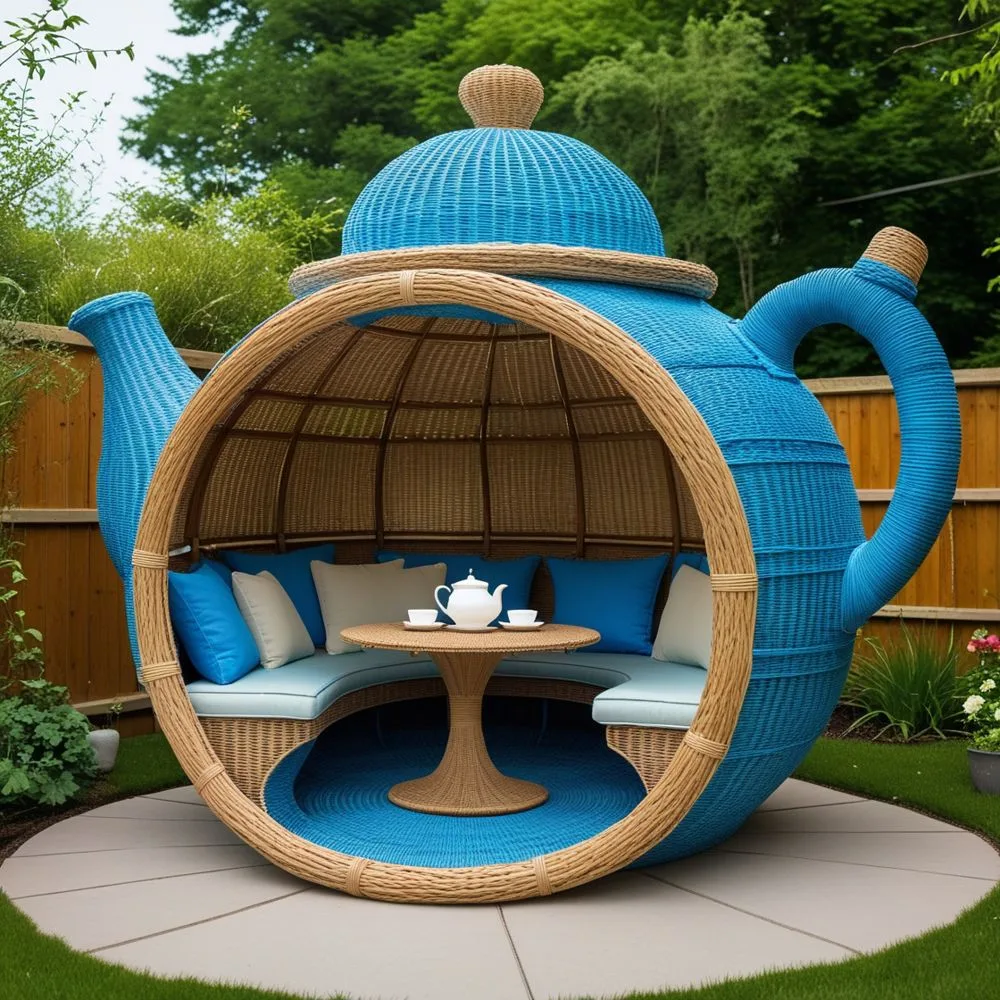
Choosing Durable and Appropriate Materials
The longevity of your tea pot-shaped outdoor seating area depends largely on material selection. Popular options include:
Flooring Materials
- Natural stone: Durable but expensive; provides an organic, timeless look
- Concrete: Versatile and strong; can be stamped or stained for decorative effects
- Brick pavers: Classic appearance with good durability; allows for interesting patterns
- Composite decking: Low-maintenance alternative to wood with extended lifespan
- Cedar or redwood: Natural materials with inherent resistance to decay
Seating Materials
- Masonry with cushions: Permanent seating with added comfort
- Weather-resistant woods: Teak, ipe, or treated lumber for built-in benches
- Metal frames with outdoor upholstery: Durable with greater comfort
- Recycled plastic lumber: Eco-friendly option requiring minimal maintenance
DIY vs. Professional Installation
While ambitious DIYers might tackle aspects of a tea pot-shaped outdoor seating area, the curved nature of the design presents unique challenges. Consider these factors when deciding between DIY and professional installation:
DIY Approach Benefits:
- Cost savings on labor
- Personal satisfaction
- Ability to implement changes during construction
- Phased implementation based on budget
Professional Installation Benefits:
- Expertise in executing curved designs
- Proper drainage engineering
- Access to specialized equipment
- Typically faster completion
- Structural guarantees and warranties
For many homeowners, a hybrid approach works well: hiring professionals for the hardscaping elements while handling the furniture, plantings, and decorative elements personally.
Landscaping Around Your Tea Pot-Shaped Outdoor Seating Area
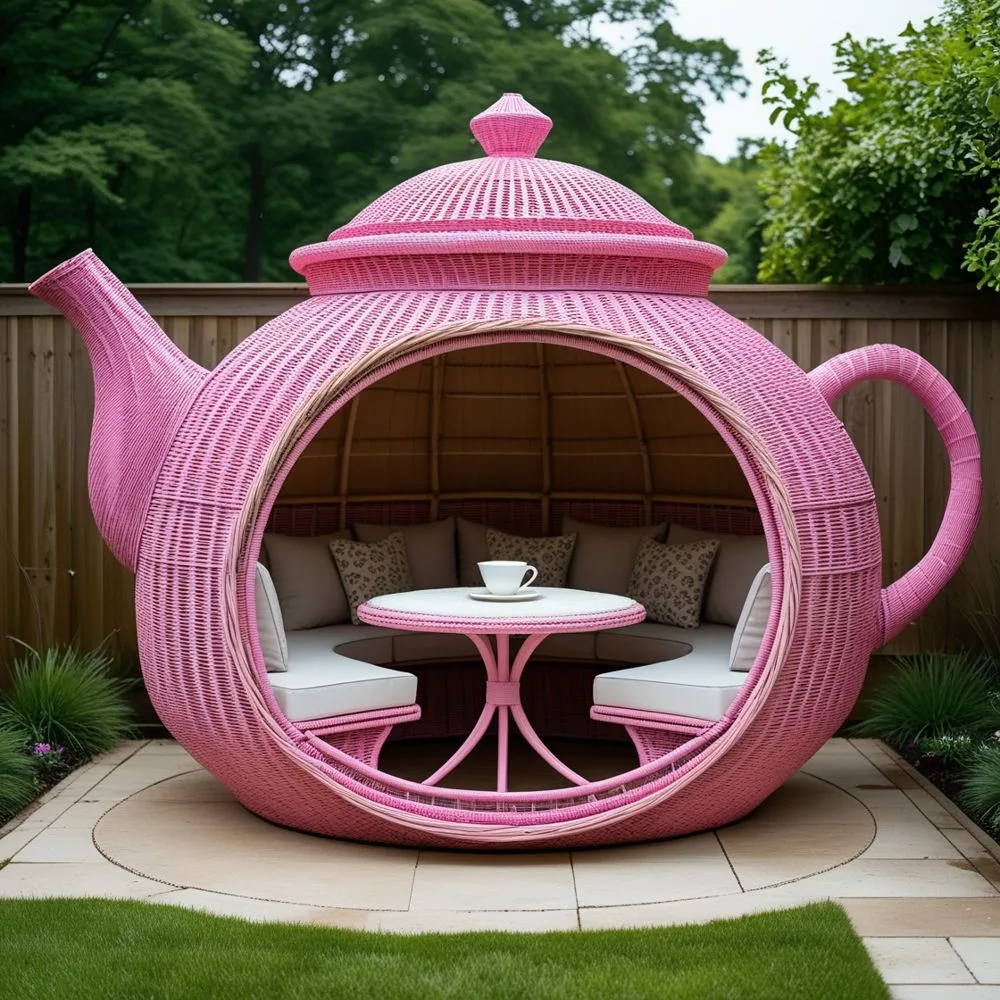
Complementary Plantings and Garden Features
The landscaping surrounding your tea pot-shaped outdoor seating area plays a crucial role in its integration with the broader garden. Consider these complementary approaches:
Theme-Enhancing Plants
- Tea-related herbs: Mint, chamomile, and lemon verbena
- Fragrant flowers: Lavender, jasmine, and roses
- Structural plants: Ornamental grasses and compact shrubs that emphasize the teapot silhouette
Bordering Options
- Low hedges: Defining the outer perimeter of the design
- Flowering perennials: Adding seasonal color changes
- Containers and planters: Flexible placement to highlight specific areas
Water and Lighting Features
Enhance the ambiance of your tea pot-shaped outdoor seating area with thoughtfully integrated water and lighting elements:
Water Features
A small bubbling fountain near the “spout” area of your design creates a playful reference to pouring tea while providing soothing background sounds. Other options include:
- Reflection pools: Small water features that catch light and create depth
- Water walls: Vertical elements that provide both visual interest and cooling effects
- Misting systems: Subtle cooling for hot climates integrated into the design
Lighting Design
Strategic lighting transforms your tea pot-shaped outdoor seating area from a daytime retreat into an enchanting evening destination:
- Perimeter lighting: Defining the teapot shape after dark
- Overhead string lights: Creating a starry canopy effect
- Uplighting key plantings: Adding drama and dimension
- Path lights: Ensuring safe navigation to and from the seating area
- Color-changing options: Allowing for mood customization for different gatherings
Styling and Accessorizing Your Tea Pot-Shaped Outdoor Seating Area
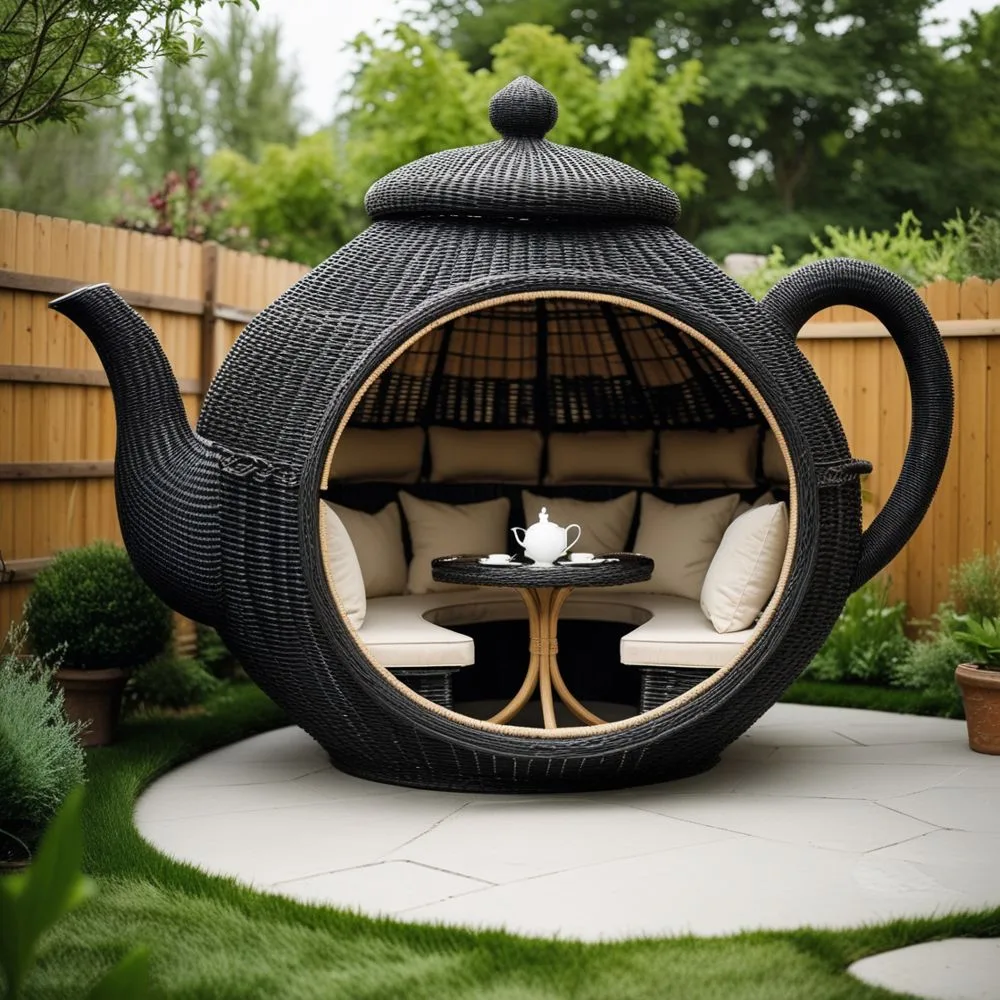
Thematic Elements and Decorative Touches
Embrace the whimsical nature of your tea pot-shaped outdoor seating area through carefully selected accessories:
- Actual teapot planters: Placing various sizes throughout the space
- Tea-themed outdoor artwork: Sculptures or wall pieces that reinforce the concept
- Custom cushions: Fabrics featuring tea-related patterns or colors
- Tea cart or serving station: Functional element that enhances the theme
Seasonal Adaptations
Keep your tea pot-shaped outdoor seating area engaging year-round with these seasonal considerations:
Spring and Summer
- Bright cushions and lightweight throws
- Temporary shade structures for hot days
- Cooling elements like fans or misters
Fall and Winter
- Weather-resistant blankets and warmer textiles
- Outdoor heating options (fire pit, patio heaters)
- Lighting that compensates for earlier sunsets
Practical Considerations for Long-Term Enjoyment
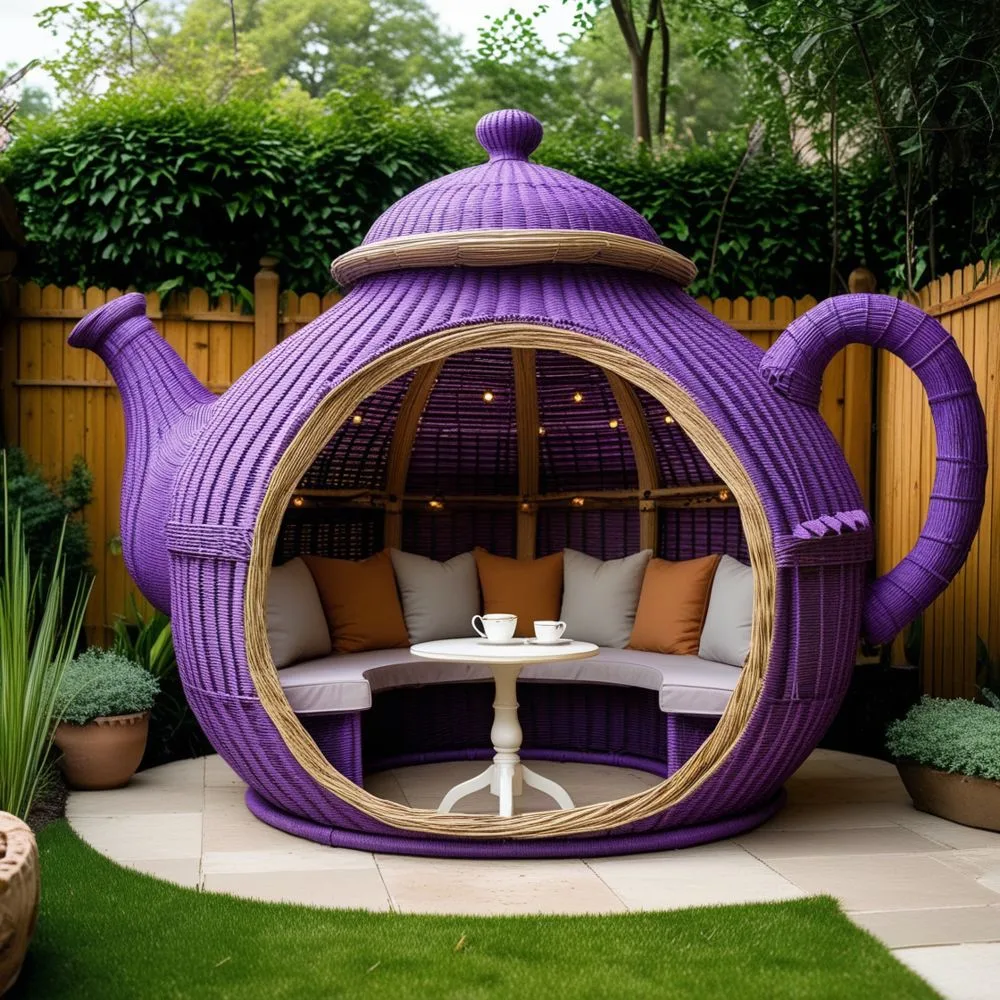
Maintenance Requirements
To keep your tea pot-shaped outdoor seating area looking its best, establish a maintenance routine that includes:
- Regular cleaning of surfaces and furniture
- Seasonal inspection of any built-in elements
- Prompt repair of any damaged components
- Plant care and pruning to maintain the design integrity
- Refreshing of any mulch or loose materials
Weather Protection and Year-Round Usability
Extend the usability of your tea pot-shaped outdoor seating area with these weather adaptation strategies:
- Retractable awnings or shade sails: Protection from sun and light rain
- Outdoor heaters: Extending use into cooler months
- Removable windbreaks: Shielding from gusty conditions
- Furniture covers: Protecting investments during harsh weather
- Drainage solutions: Ensuring the area dries quickly after precipitation
Pouring Creativity Into Your Outdoor Living
A tea pot-shaped outdoor seating area represents more than just a place to sit—it’s an expression of creativity and personality that transforms ordinary outdoor living into something extraordinary. By thoughtfully considering the design elements, materials, and finishing touches discussed in this guide, you can create a garden feature that serves as both a functional gathering space and a unique reflection of your personal style.
Whether you’re hosting afternoon tea parties, evening conversations around a fire, or simply enjoying a quiet moment with a book, this whimsical yet practical design creates a dedicated space for making memories. The curved shape naturally encourages interaction while the thematic elements spark joy and conversation.
As outdoor living continues to evolve beyond utilitarian patios and decks, designs like the tea pot-shaped outdoor seating area remind us that our exterior spaces deserve the same attention to detail and personal expression as our interiors. By brewing up a blend of function and fantasy in your garden, you create not just a seating area, but a destination—one that invites both daily use and special occasions.
So, put the kettle on for inspiration, and consider how a tea pot-shaped outdoor seating area might pour new life into your garden landscape. With thoughtful planning and creative execution, you’ll create an outdoor space that steeps itself in both practicality and charm, ready to be enjoyed for years to come.

